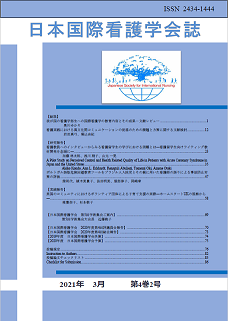Purpose: This study aimed to examine the challenges of cross-cultural communication and the measures needed to build effective communication, and to raise suggestions for improving the quality of communication and care for foreign patients.
Method: Japanese and international literature published between 2008 and 2018 was included in the review. Six databases were searched by keywords in Japanese and English. A total of 30 publications, 15 Japanese and 15 international articles met the search criteria, and the search findings were recorded according to the PRISMA protocol.
Result: The challenges identified in cross-cultural communication fell into three main themes: " poor cross-cultural understanding, " " impact on care processes and outcomes, " and " lack of multilingual services and inaccessibility " Furthermore, we identified three main measures for building effective communication, that is, " provision of learning opportunities for nurses ," " effective use of multilingual services, " and " creating rapport and establishing supportive relationships. "
Discussion: To enhance cross-cultural understanding and communication skills among nurses who provide care to foreign patients, a learner-centered approach that provides various educational methods meeting the needs of learners is required. The effective use of multilingual services includes working with certified interpreters and the use of visual aids such as diagrams, pictures, cards, and translation books, which help to provide correct information and promote understanding. Hence, patients and nurses are more reassured, and the quality of care can be improved. To establish rapport with foreign patients, if there is a language barrier, the use of nonverbal communication, having an attitude for understanding the different cultural backgrounds proactively, and accepting differences can be effectively used.
View full abstract
